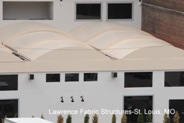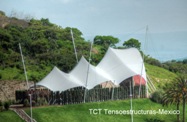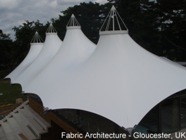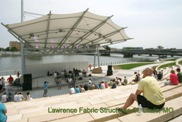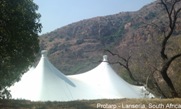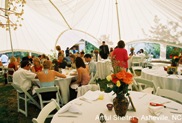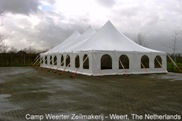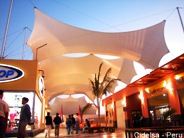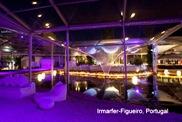Meliar Design has been involved in the development of light weight structures for over 30 years. Initially writing custom software for the aerodynamics, development and patterning of paragliders, the software was then developed for use in the architectural tensile structures field, and ongoing program development has continued over the last 20 years.
Meliar Design are members of tensile structure organizations including Tensinet in Europe and the Fabric Structures division of the Industrial Fabrics Association in America. We are registered developers for both the AutoDesk and Rhino CAD platforms. In the "About MPanel" section of the menu you can find more information about Meliar Design, our customers, and how to contact us.
MPanel software is probably the easiest tensile structure design software to learn and use. Operating as a toolbar within AutoCAD or Rhino, MPanel uses simple rules to build models, form find the shape, and create the panels. Using simple rules and procedures helps the designer to develop a feel for the structure, interactively design the desired shape, and then take it through the stages to production. And the model manipulation, viewing, rendering and printing uses the host CAD platform standard methods.
Although MPanel easily designs simple shade structures, it is also used on complicated multi element designs, such as multi peak conics, structures with internal webbing reinforcement, and inflated structures. And MPanel is extensible, there are additional modules that perform structural finite element analysis to predict the stresses involved with wind and snow loads, and a nesting module that arranges the panels for minimum material usage. In the "Online resources" section of the menu you will find tutorial drawings and videos, plus guidance notes, to help both the beginner and the experienced MPanel user.
Meliar Design are members of tensile structure organizations including Tensinet in Europe and the Fabric Structures division of the Industrial Fabrics Association in America. We are registered developers for both the AutoDesk and Rhino CAD platforms. In the "About MPanel" section of the menu you can find more information about Meliar Design, our customers, and how to contact us.
MPanel software is probably the easiest tensile structure design software to learn and use. Operating as a toolbar within AutoCAD or Rhino, MPanel uses simple rules to build models, form find the shape, and create the panels. Using simple rules and procedures helps the designer to develop a feel for the structure, interactively design the desired shape, and then take it through the stages to production. And the model manipulation, viewing, rendering and printing uses the host CAD platform standard methods.
Although MPanel easily designs simple shade structures, it is also used on complicated multi element designs, such as multi peak conics, structures with internal webbing reinforcement, and inflated structures. And MPanel is extensible, there are additional modules that perform structural finite element analysis to predict the stresses involved with wind and snow loads, and a nesting module that arranges the panels for minimum material usage. In the "Online resources" section of the menu you will find tutorial drawings and videos, plus guidance notes, to help both the beginner and the experienced MPanel user.
Tensile Fabric Structures
Tensile membrane structures are unusual in that the stresses in the membrane are determined by the membrane shape, and vice versa. So the shape of the structure has to follow the stress path, and this leads to a shape that is often aesthetically pleasing, where form follows function. Tensile membrane structures are used as shades, awnings and roofs as they can economically span large areas.
Although tensile structures can be designed using physical scale model simulations, the use of computer algorithms for finding the shape (form finding) and developing the flat panels to create that shape (paneling) is now commonplace, and allows designers more freedom to try different designs, and more confidence in the results.
Although tensile structures can be designed using physical scale model simulations, the use of computer algorithms for finding the shape (form finding) and developing the flat panels to create that shape (paneling) is now commonplace, and allows designers more freedom to try different designs, and more confidence in the results.





